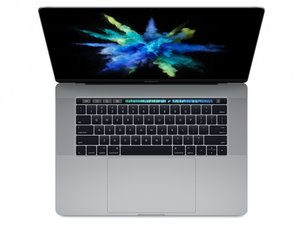A new system just doesn't gain anything in repasting. Apple uses a good paste while some will argue, the amount of improvement putting in the very best paste is 1 or 2 degrees. You'll not get any benefit with so little an improvement.
Think how a race car driver is tuning up his car for the big race. Here he's trying to maximize his car in a car duel with others. Now look at that same person driving to the race course he's not shaving corners or worried about the slow car in front of him. Very different patterns here. This is also true here. This system is not a super computer racing though calculations, its a general purpose laptop designed for portability for general purpose computing.
To your direct question:
There are two issues you are dealing with, the first is making sure you don't create any air bubbles, the second putting on enough so the chip is fully covered and not spilling over.
I personally use the pea method (a dab in the middle so it spreads out evenly in all directions). As you press straight down the paste will spread out pushing the air away.
Spreading a coat of paste only works if you press from the edge tilting it to the other side in a wiping motion, otherwise you'll likely get an air bubble or two (think how you turn a page in a book). Most of the time you don't have room enough to do this and will likely use to much paste.
Air bubbles have two effects they reduce the surface area and prevents the heatsink to be as tight as you can get for better heat to transfer. Remember you are trying to fill the microscopic voids not add extra thickness to the sandwich.
The best way to practice is to get some glass microscope slides and use a few different viscus liquids like honey and gel toothpaste. Here you can see how the way you apply the top glass effects the filling of the honey across. Hint do the end corner L configuration so you can pull the glass apart without breaking. Using different viscosity liquids allows you to see how they react. Some paste is runny others stiffer.
War diese Antwort hilfreich?
Bewertet
Rückgängig machen
Bewertung
2
Abbrechen
Schau durch den Thread, bis du den richtigen Platz für diesen Kommentar gefunden hast. Klicke dann auf "Den Kommentar diesem Post zuordnen", um ihn zu verschieben.

 3
3  3
3 
 970
970
7 Kommentare
For starters I would not re-paste a brand new system! In three to four years is when the pastes effectiveness has worn down is when I would to this.
You'll void your Apple warranty and if you make a mistake it will be a very expensive one!
So... DON'T DO IT
von Dan
The reason I am willing to try this is because of this video: https://youtu.be/vOJjAho26JA
von [deleted]
Did you catch what Quinn said at the very end?? "Is it worth it for a general use computer, probably not"
If you are pushing your system hard then it makes sense! Even still it has its limits! Overtime you'll shorten the systems live span running it this hard.
As good as the MacBooks are they are not a replacement of a proper desktop system! Between the chips used and the better heat management a desktop has, heavy processing should be done of the desktop system not on your laptop.
von Dan
https://www.youtube.com/watch?v=ehAidzY4... try this first.
von Valentino Photography
Dan, really the gpu is completely shut down already after 1 minute intense use. I tryed it with cinebench. So something has to be done. So far the only thing I did was playing with external cooling and fans: https://www.youtube.com/watch?v=ehAidzY4...
von Valentino Photography
2 weitere Kommentare anzeigen